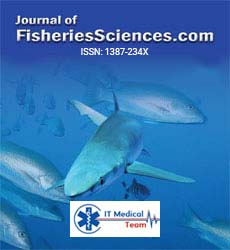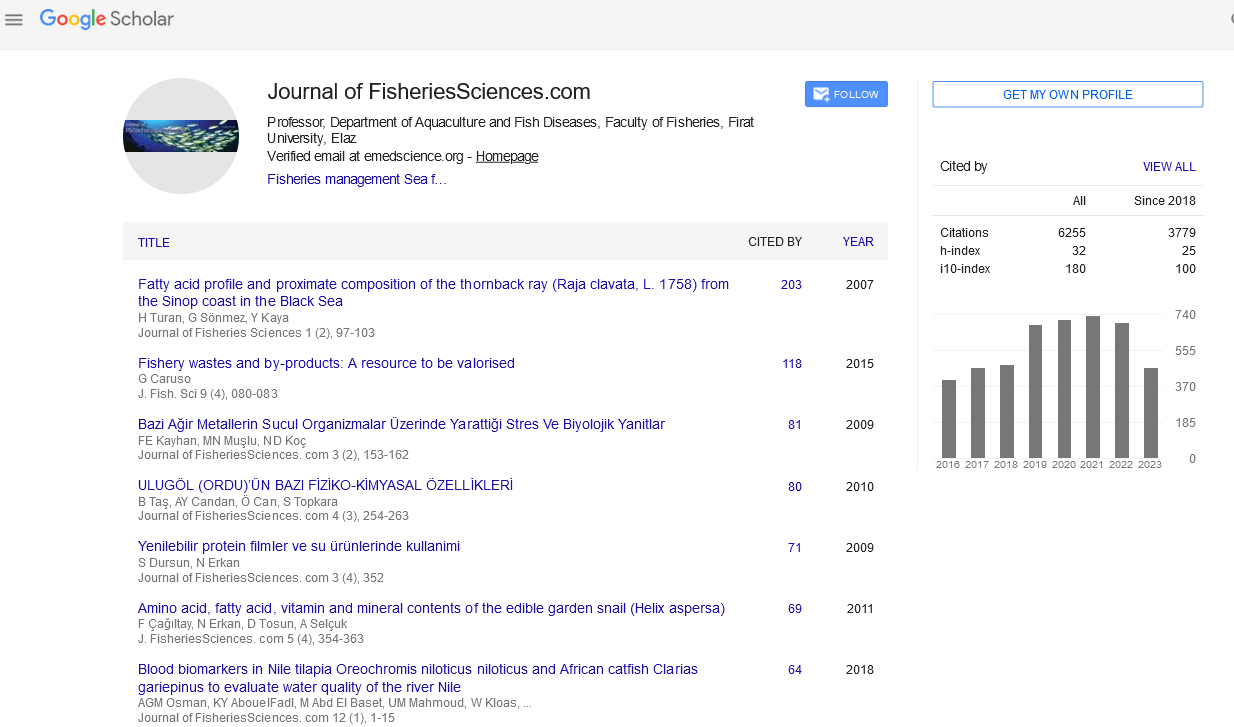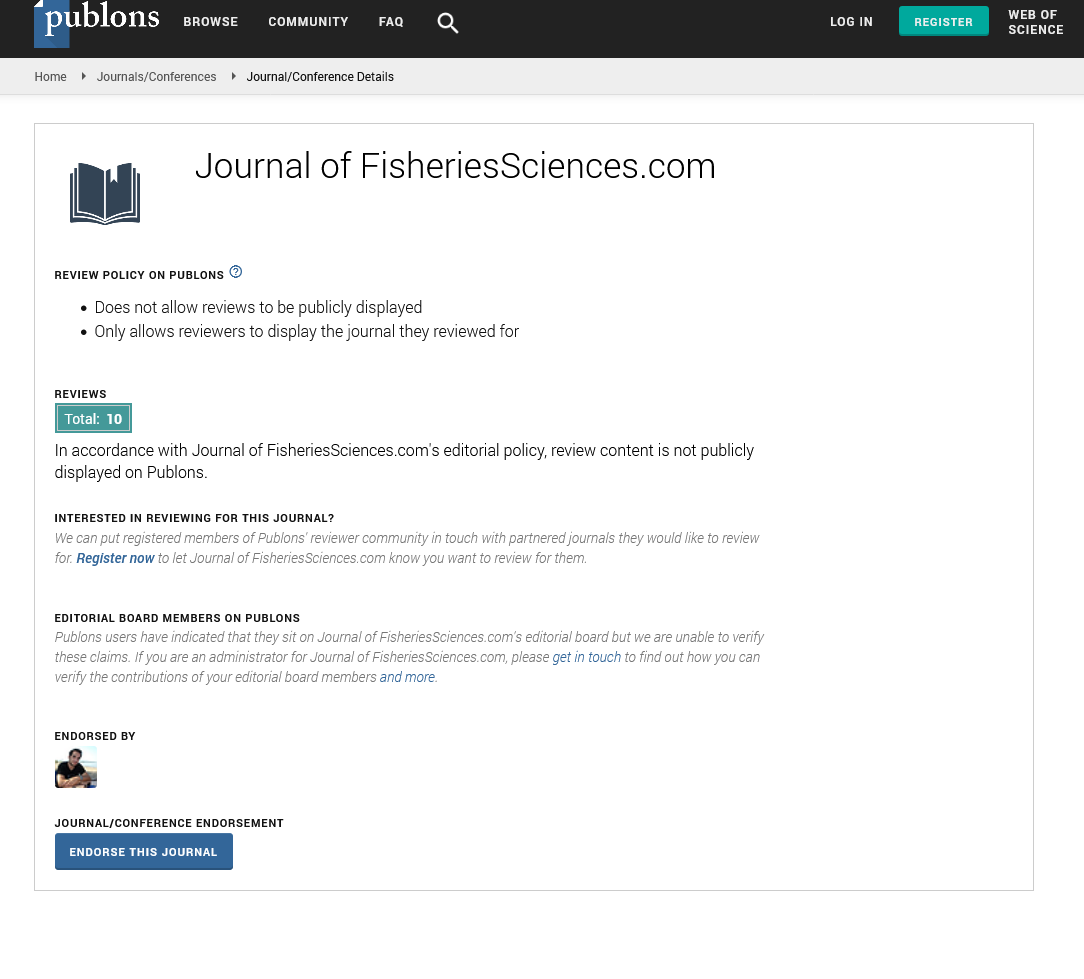Commentary Article - (2022) Volume 16, Issue 7
A Guide to Ornamental Fish Farming & Management.
Abdul Fazzel*
Department of Wildlife and Fisheries Management, Anna University Chennai, India
*Correspondence:
Abdul Fazzel, Department of Wildlife and Fisheries Management, Anna University Chennai,
India,
Email:
Received: 01-Jul-2022, Manuscript No. ipfs-21-9436;
Editor assigned: 04-Jul-2022, Pre QC No. ipfs-21-9436 (PQ);
Reviewed: 19-Jul-2022, QC No. ipfs-21-9436;
Revised: 23-Jul-2022, Manuscript No. ipfs-21-9436 (R);
Published:
30-Jul-2022, DOI: 10.36648/1307-234X.22.16.102
Abstract
Fish farming, often known as pisciculture, is the commercial reproduction of fish, typically for food, in fish tanks or simulated enclosures such as fish ponds [1]. It is a type of aquaculture in which aquatic creatures such as fish, crustaceans, and mollusks, and so on are cultivated and harvested in a natural or pseudo-natural setting. A fish hatchery is a facility that releases juvenile fish into the wild for recreational fishing or to supplement a species' natural numbers [2]. Carp, catfish, salmon, and tilapia are the most common fish species produced in fish farming around the world. Global demand for dietary fish protein is increasing, which has led in widespread overfishing in wild fisheries, leading in severe reductions in fish stocks and, in some locations, outright depletion. Fish farming allows the establishment of fictitious fish colonies that are fed adequately, protected from normal predators and competitive threats, have access to veterinarian services, and are easier to harvest when needed, all while being separated from and thus not affecting the sustainable yields of wild fish populations [3]. While fish farming is practiced all around the world, China alone accounts for 65 percent of the world's farmed fish production. Aquaculture produced more than half of all seafood in 2016 [4]. Aquaculture has been the primary driver of development in fisheries and aquaculture production over the previous three decades, with an average annual growth rate of 8.3 percent from 2010 to 2021, reaching a record 82.6 million tons in 2022.
Introduction
Ornamental fish farming or culture is the raising of attractive,
colorful fishes of varied elements in a limited aquatic setting.
These fish are mostly grown by farmers and hobbyists [5].
Living jewels is another term for ornamental fish. Many people
find ornamental fish care and multiplication to be a compulsive
activity that provides not only aesthetic pleasure but also money
opportunities. Across 600 ornamental fish species have been
announced from various aquatic settings around the world [6].
Ornamental fish and the industry
The aquaculture business is currently the world's fastest
expanding food sector, and the open oceans are viewed as one of
the most likely zones for largescale expansion. The aquaculture
sub-sector is made up of three major components: brackishwater
aquaculture, freshwater aquaculture, and mariculture. A hobby involving ornamental fish can give pleasure to both young
and old, calm the mind, keep blood pressure normal and so
prevent heart-related diseases, and be aesthetically pleasing and
rewarding.
Types
They are classified into eight families: anabantidae, callichthyidae,
characidae, cichlid, cobitidae, cyprinodontidae, cyprinidae, and
poeciliidae. Aquarium fishes are generally divided into two types:
egg layers and live bearers.
Zebra fish (Brachydanio rerio), Notopterus notopterus is a type
of black knife fish, Botia lohachata is a kind of reticulated loach.
Conclusion
Ornamental fish breeders and those who are unemployed can benefit from the culture and breeding of aquatic animals.
Aquaculture requires less space and initial investment than most
other types of aquaculture. It is only necessary to understand the
habits and biology of fishes in ornamental fish farming. Even in
urban areas, it can be practiced with little disruption to backyards or roofs of houses.
The women and elders can run these small units and boost their
social and economic well-being since less manpower is needed.
REFERENCES
- Huntingford FA, Adams C, Braithwaite VA, Kadri S, Pottinger TG et al. (2006) Current issues in fish welfare (PDF). Journal of Fish Biology 68: 332-372.
Google Scholar, Crossref, Indexed at
- Morton A, Routledge R, Peet C, Ladwig A (2004) Sea lice (Lepeophtheirus salmonis) infection rates on juvenile pink (Oncorhynchus gorbuscha) and chum (Oncorhynchus keta) salmon in the nearshore marine environment of British Columbia Canada. Can J Fish Aquat Sci CAN J FISH AQUAT SCI 61: 147-157.
Google Scholar, Crossref
- Krkosek M, Gottesfeld A, Proctor B, Rolston D, Carr-Harris C et al. (2007) Effects of host migration, diversity, and aquaculture on disease threats to wild fish populations. Proc R Soc Lond Series B 274: 3141-3149.
Google Scholar, Crossref, Indexed at
- Krkosek Martin (2007) Report: Declining Wild Salmon Populations in Relation to Parasites from Farm Salmon. Science 318: 1772-1775.
Google Scholar, Crossref, Indexed at
- Burka JF, Hammell KL, Horsberg TE, Johnson GR, Rainnie DJ et al. (1997) Drugs in salmonid aquaculture A review. JVPT 20: 333-349.
Google Scholar, Crossref, Indexed at
- Callier Myriam D, Byron Carrie J, Bengtson David A, Cranford Peter J, Cross Stephen F et al. (2017) Attraction and repulsion of mobile wild organisms to finfish and shellfish aquaculture: a review (PDF). Reviews in Aquaculture 10: 924-949.
Google Scholar, Crossref, Indexed at






